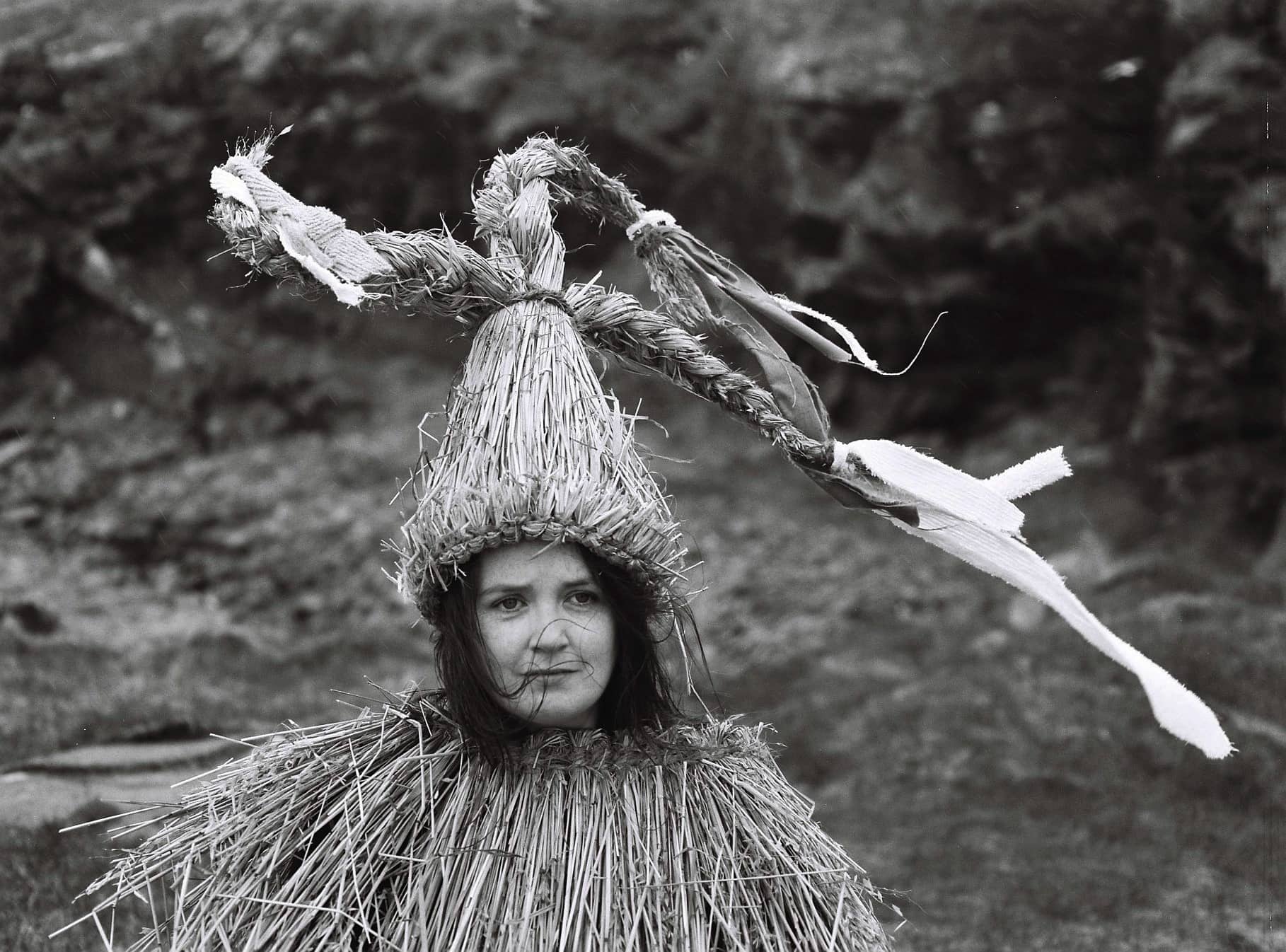We made a film!
No, it’s not a remake of the wickerman, rather it’s a tribute to the Shetland tradition of guizing in straw costumes as seen through the eyes of a photography student and juxtaposed with archive sound recordings from one who remembers the now extinct custom.
Clutching at Straws from Clint Watt on Vimeo.
Clutching at Straws from Clint Watt on Vimeo.
Glasgow photography student Gemma Ovens approached our drama group to help her out on a photo shoot inspired by the tradition of straw guizers and the ethnologist in me was fired up to research Skeklers. However, instead of satisfying my need for knowledge, I am still scratching my head.
The guizer – dressed in straw and ribbons, with blinded face and disguised voice – was first mentioned in Samuel Hibbert’s, Description of The Shetland Islands in 1822, but even then the tradition was described as something which was dying out.
Any evidence of skekling is fragmentary, occurring only in visitor accounts and almost each one (found mainly in the mid-late 19th Century) states that the custom was only just clinging on. Here is one such visitor account from the 1850s, which describes the skeklers in their full glory!
“The kitchen was full of beings, whose appearance, being so unearthly, shook the gravity of my muscles and forced a cold sweat to ooze from every pore in my body…
…[they] stood like statues. One was far above the rest and of gigantic dimensions. eyes, mouth, or noses they had none, nor at least a trace of their countenance.
They kept up an incessant grunt — a noise partly resembling a swine or turkey cock. Their outer garments were as white as snow ans consisted of petticoats below and shirts on the outside with sleeves and collars. They were veiled and their headdresses or caps were about 18 inches in height and made of straw twisted and plaited. each cap terminated in three or four cones of a crescent shape. all pointing backwards and downwards with bunches of ribbons of every colour raying from the points of the cones.”
Once a common sight at Halloween and Christmas and New Year guizing, the skekler was also an honoured guest at the Shetland Wedding, where a group of characters – the ‘fragments’ tell us they had names such as Scudler, Gentleman, Fool & Judas – would enter the celebration and dance with the bride, blessing the union. Again, they were dressed in straw, with their faces and voices disguised.
It is shame that the accounts of skekling only cover a finite period of time and over what seems to have been its demise. There is photographic evidence from the early 20th century of boys in Fetlar, who are dressed head to foot in straw. I wonder if the custom was passed on to the children in an attempt to keep it alive, much in the same way that the Papa Stour Sword Dance was taught to the boys on the Island in the 50’s/60’s to ensure that there were people to carry on the tradition, when the island suffered from depopulation.
Still, I don’t feel like I drew the short straw on this occasion (boom, boom!) I have been thoroughly captivated by the Skekler, much in the same way Gemma has. It is nice to see someone from outside a tradition come in and look at it with new eyes and I hope she has the opportunity to bring her exhibition up to Shetland.
Clutching at Straws has been entered into Hansel of Film 2012, a short film festival which is travelling from Shetland to Southampton (and back) as part of the London 2012 Olympics celebrations.
15/7/13 edited to add:
‘clutching’ has been entered into the Berwick Film Festival 2013 and has made the long list. We were inspired to enter due to the subject fitting the North by Northeast theme and we watch this space!


Welcome back and its been worth waiting for–really good.xx
That’s absolutely fascinating – I’d seen pictures, but no real explanation. Or maybe that should be ‘no further information’ – I don’t think any definite explanation is possible. So glad these traditions survive…
It’s one of those “lost to the mists of time” things, but I definitely think there was a larger dramatic element to the Skekler, who was later just described as a guizer who visited homes during Halloween – there were definite dramatic elements & even coarse staging in some of the fragments of accounts.
Fascinating, I wish I could go to the times before “since records began” 😉
There are so many interesting traditions like first footing and mumming – gangs of kids wrenning on St. Stephens Day, wassailing, all that – I hope that there are bits of research that can be pulled together to tell us more. The theatrical aspects are so exciting – strange costumes, epic battles acted out, death & rebirth. So iconic, and so intriguing to know how folk celebrated or came to terms with the core issues of life.
It’s the theatrical aspects that thrill me too. Fragments may never show the whole story and that’s a shame, but they are exciting that they are part of our past!